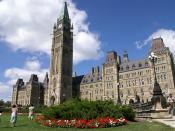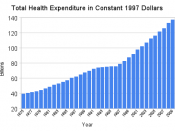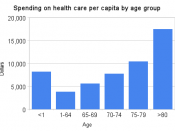Over the course of the next forty years, the portion of the population over age 65 will increase by slightly more than 100 per cent, from 11.5 per cent of the population to 23.5 per cent. To put this increase in context, it took roughly a century - from the late nineteenth to the late twentieth century - to bring about an increase of similar magnitude in the portion of the population over 65. Moreover, within the over 65 group, it is the oldest subsets of the population that are growing most rapidly (i.e. the over 75s and over 85s). The rapid growth in the population over 65 s is likely to lead to significant impact on labour markets and also has given rise to fears that the cost of public pension programs and health care will impose intolerable financial burdens on the working age population in the years ahead, but at the same time, substantial contributions are made by older people in unpaid work including agriculture, the informal sector and in voluntary roles.
The ageing BC population and the likely affect on labor turnover rates were covered in the April 1999 release of Earnings and Employment Trends. This article looks at a different aspect of the ageing workforce, this time from the perspective of workplace absenteeism due to own illness or disability. (See Chart 1) In any one-week, approximately 4.4 per cent of employees take some time off work because of illness (Based on data from the Labour Force Survey, 1998.) Among those who do, the average length of time off the job is 23 hours per week (Among those who were away part of the week, the average number of hours away was 10.0) When these numbers are converted to an annual basis and calculated across all employees,


